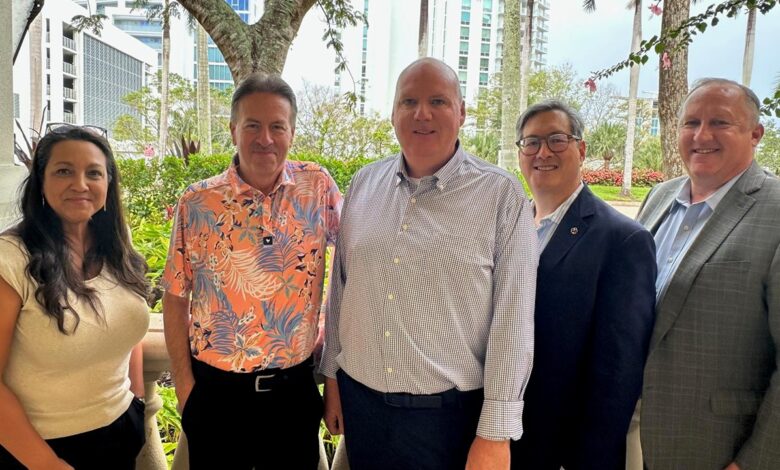
BITAC Purchasing & Design Summer 2025 Panel: Cultural And Local Influence, Part 1
By Jim Nelson | October 17, 2025
In conjunction with BITAC, our event-producing sister company, Hotel Interactive recently held its annual summer Purchasing & Design event with hospitality executives from across the nation.

Among the panel discussions was one moderated by David Messersmith, the president of Drop Zone Hospitality. Messersmith, who has worked on numerous sides of the hospitality industry, including design and development. Messersmith and his panelists — Corina Heizer, the VP of procurement at Premier Project Management; Marriott International’s Director, Global Design | US & Canada Dave Morton; Clay Snyder, senior director at Hilton Supply Management; and Bill Tom, the regional vice president, construction and project management for Hyatt — focused their conversation on best practices for incorporating local art and cultural elements.
DAVE MESSERSMITH: When you’re starting a project, how do you look at your teams and evaluate the local culture and begin to formulate all of that into the design process, and then further the skill set of the local labor and the materials that are available?
CORINA HEIZER: I joined this panel from a procurement perspective, but Premier has multiple departments, including development, interior design, architecture, construction, and corporate engineering. So, when our designers are developing brand narratives for regional locations, they start off with the beautiful pictures, the imagery, the inspiration, images that would make any of us probably want to go to that property; we take that information, and during their design development process we’re able to integrate and have conversations about, “This is what the brand’s expecting, where would you recommend we go?” We have internal previews on which vendors might be the best, including local artisans. Specifically related to art and design, if you’re looking for local artisans we would probably have a design consultant or an art curator, if you will, or cultural person who’s familiar with that area to make sure that we are, in fact, going to provide the influence they want given the manufacturer and relationships that we have.
 DAVE MORTON: From Marriott’s perspective, we have — as everybody else up here does — such a varying offering of hotels. Certain ones are simply plug and play, where we can hand you a set of drawings and specifications, and other than a site plan being adjusted you can purchase it in six months. There’s others, when you get into our premium and up, every single hotel has a design narrative that associates with that. It’s sort of a look back six months down the road: Are you still following the design narrative that takes on a local flavor? We rely an awful lot on our interior designers for that. Because of the amount of projects we have, we cannot select products, specify it; I tell folks we are influencers in the Marriott world. There’s ways of designers getting into the Marriott for a project. We do have a recommended designer program that we push, but a lot of times the artwork follows that. Couple of quick examples: I know we’ve got an AC Hotel in D.C., and it’s subtle indications where you’re at. Behind the front desk — this is more literal — there’s a mural of Washington, D.C., and the monuments, but everything on that back wall is made out of copper pennies tying to the federal government. There’s also a large piece of artwork, I would probably say, 10 x 15, that hangs at the edge of the elevator lobby, and if you know where you are and think about it, it’s looking at the Hall of Congress from an aerial view; you’re looking down, and you’re seeing all the seats that spread out in the various areas. So, a lot of times it’s subtle artwork, but most of our artwork, especially in the premium luxury segment, definitely influences the local practice and a lot of local artisans. In Sheraton Denver, we had an artwork program that was based on rope, and it was all rock climbing ropes that were being recirculated. So, it definitely varies by brand, but artwork and technology are another way that we try to do it. Technology is a little tougher, though, because it changes so quick.
DAVE MORTON: From Marriott’s perspective, we have — as everybody else up here does — such a varying offering of hotels. Certain ones are simply plug and play, where we can hand you a set of drawings and specifications, and other than a site plan being adjusted you can purchase it in six months. There’s others, when you get into our premium and up, every single hotel has a design narrative that associates with that. It’s sort of a look back six months down the road: Are you still following the design narrative that takes on a local flavor? We rely an awful lot on our interior designers for that. Because of the amount of projects we have, we cannot select products, specify it; I tell folks we are influencers in the Marriott world. There’s ways of designers getting into the Marriott for a project. We do have a recommended designer program that we push, but a lot of times the artwork follows that. Couple of quick examples: I know we’ve got an AC Hotel in D.C., and it’s subtle indications where you’re at. Behind the front desk — this is more literal — there’s a mural of Washington, D.C., and the monuments, but everything on that back wall is made out of copper pennies tying to the federal government. There’s also a large piece of artwork, I would probably say, 10 x 15, that hangs at the edge of the elevator lobby, and if you know where you are and think about it, it’s looking at the Hall of Congress from an aerial view; you’re looking down, and you’re seeing all the seats that spread out in the various areas. So, a lot of times it’s subtle artwork, but most of our artwork, especially in the premium luxury segment, definitely influences the local practice and a lot of local artisans. In Sheraton Denver, we had an artwork program that was based on rope, and it was all rock climbing ropes that were being recirculated. So, it definitely varies by brand, but artwork and technology are another way that we try to do it. Technology is a little tougher, though, because it changes so quick.
DAVID MESSERSMITH: Dave, you touched on something that I thought was interesting, and Bill, I’d love your thoughts as well: Do the brand standards fluctuate from country to country or region to region much?
BILL TOM: I agree with everything Dave said in terms of the positioning of a hotel and the brand of the hotel makes a big difference about how deep you can pull cultural and local influence because of that brand standard. Not only because of that, but because of your customer and the consistency that they’re looking for, that may not be that important. And I would defer to the purchasing folks to tell us if there’s a premium for, say, going local versus buying from a major vendor who produces artwork of the Eiffel Tower in Paris out of Nashville, Tennessee; does that make a big pricing difference? But I do think that when you start talking globally and internationally, that’s when you can intersect it more with what your brand product is. Again, if you’re going to a Hyatt Place in Paris, which we don’t have but if we did, I bet you it would look different than the ones here. There’d be a broader variance to allowing a sense of locality that I see globally, but within North America, I think it’s pretty strict. You get more into this Ritz-Carlton level, you have much more freedom on the artwork, menu items within the restaurant, for instance — those are all kinds of places where you can have touch points of locality. And when I say artwork, we just did a project in New York where we wanted only New York State artists. There’s no painting or black and white photo of the Empire State Building, but all of the art was curated and done through New York artists. So that’s another way of bringing local in.
CLAY SNYDER: In all three of our cases, we inherit what development sends our way, and we continue to make this space much grayer as each of our brand companies are getting into the independent space, the collections and such, which creates that opportunity for creativity. I think we’re all now in the camping glamping spaces; we’re all in the lower-level independent hotels up through the luxury independent hotels as well, but each of those allow a different swim lane of engagement locally, but there’s a cost involved as you go up and down that line as well.
In part 2 of this article, the panelists will discuss more about how success in hospitality development and design hinges on robust project management, cross-disciplinary integration, local influence, and experiential travel.

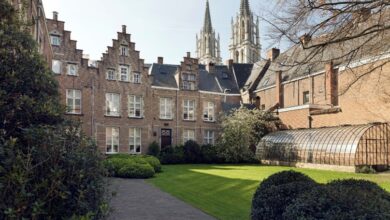
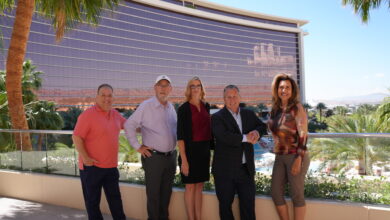

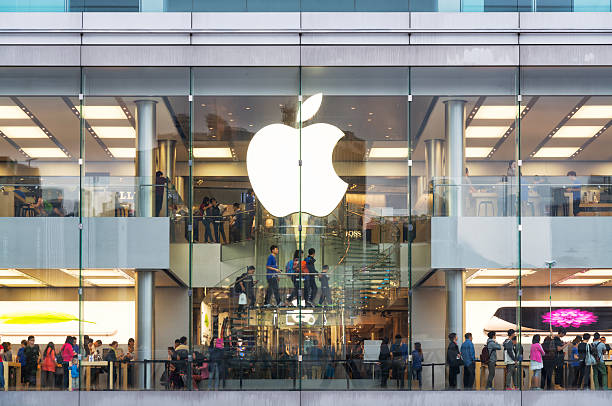
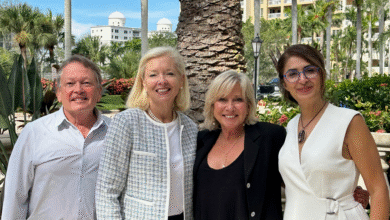
Get involved!
Comments